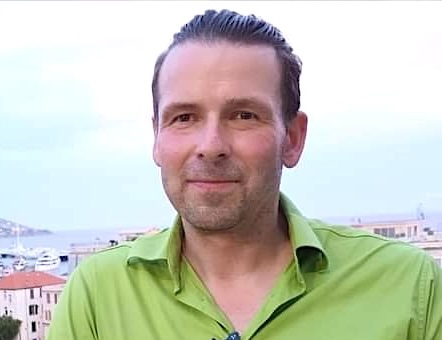By Paul Zimmerman
Michael Kaphengst’s artwork is a riveting exploration of complexity and contradiction, challenging viewers to unravel the intricate layers of meaning within each piece. His paintings, surrealistic or abstract, evolve into haunting depths over time, leaving a lasting and sometimes unsettling impact. The artist demonstrates a sophisticated pictorial intelligence, skillfully incorporating spatio-temporal involutions reminiscent of Op and Pop-art. These techniques create a space of possibility through enigma and paradox, inviting viewers to engage with the paintings on a cerebral level.
Ambitious in his exploration of social and cultural issues, Kaphengst delves into themes of sameness and difference, volition and the involuntary, and destiny and fate. The paintings capture the essence of emerging energy, employing visual analogies to depict the effects of causality and the complexities of human agency in the suspension of natural laws. The artist’s mixed media works take on a profound exploration of the spatiality of the body and motility, challenging the sensory givens of physiological and somatic existence. His narrative suggests a delicate balance between subjectivity and objectivity, portraying the phenomenal entity seemingly triggered by situations beyond its control.
More than remarkable images, Kaphengst’s paintings are profound reflections on primary temporality, dynamic unity, and the overlapping dimensions of time. The meticulous care with which he addresses questions of subjectivity and non-coincidence underscores the openness of time to the Other, fostering shared participation in the creation of meaning. Kaphengst’s characters and abstractions inhabit shadowy spaces, reflecting the volatile and fluid alchemy of waking dreams. His reverie mirrors an internal rhythm of life, providing an outlet for escapist tendencies vital for the flourishing of his imaginative consciousness.

In characterizing the complex and contradictory quality of Kaphengst’s art, we find incongruous facets arising from a struggle to manifest an ‘inner realism’ only available to the artist. Engaged in seeking spiritual order in a secular imagination, Kaphengst’s “logic of passion” gives moral authority and remarkable subversive importance to the artist’s task of unveiling the marvelous. His work is an invitation into a world of wonderment where viewers can partake in the artist’s self-referencing exploration of creation itself.
Michael Kaphengst’s art exists in a realm poised delicately between the abstract, symbolic, and figurative, creating an immersive experience that transcends the boundaries of traditional artistic expression. In each stroke and hue, Kaphengst captures the ephemeral nature of our perceptions, reflections, and sensations, inviting the viewer to a contemplative journey through the interplay of human strength and fragility. His emotionally charged works serve as psychic spaces, each canvas becoming a portal into a world that resonates with our deepest values and emotion-laden perceptions, mirroring the contemporary human experience.
